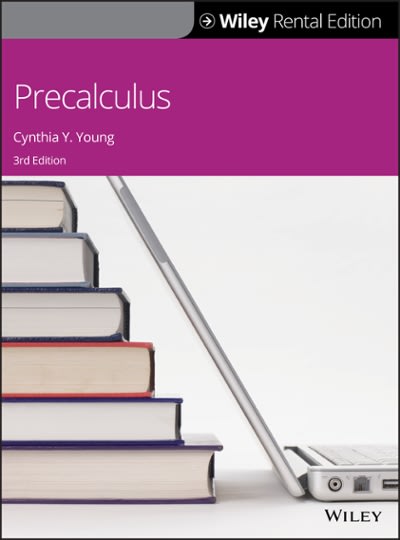Answered step by step
Verified Expert Solution
Question
1 Approved Answer
The data file consists of three columns of COVID testing data. The first column is the number of people tested for COVID, the second column
- The data file consists of three columns of COVID testing data. The first column is the number of people tested for COVID, the second column the number testing positive and the third column is the number of people presenting with significant symptoms. Each row corresponds to one week and the numbers reported are cumulative (so the value in first column of row i is the total number of people tested up to and including week i). Please cut and paste the first line of the data file (which begins with a #) into your report as it identifies your dataset.
- 1. In the first part of the assignment you'll work with just the last row of data in the file you downloaded. That has three values: the number N of people tested for COVID, the number P testing positive and the number S with significant symptoms.
- The extracted data is N = 1088633, P = 160694, S = 81729
- (a)A key concern with COVID is that people may be infected but show no significant symptoms. Assuming that the people tested are drawn uniformly at random from the population, use your data to estimate the fraction of the population expected to (i) test positive for COVID but have no significant symptoms and (ii) test positive and have significant symptoms. Explain/discuss your calculations. [5 marks]
- (b)Estimate a confidence interval for each of your two estimates in part (i). Explain/discuss your calculation. [5 marks]
- (c)Is it important to assume that the people tested are drawn uniformly at random? How might it affect your estimates if this isn't the case? [5 marks]
- (d)For people without significant symptoms the COVID test used has a false positive rate of 0.01 and a false negative rate of 0.1. That is, if you don't have COVID there is a 0.01 probability that the test will incorrectly give a positive result, while if you do have COVID (but have no symptoms) there's a 0.1 probablity that the test will incorrectly give a negative result. Use this information, combined with your estimate from part (i), to estimate the fraction of the population that have COVID (rather than just testing positive) but have no significant symptoms. Hint: Use marginalisation. [5 marks]
- (e)Estimate a confidence interval for your estimate in part (d). Explain/discuss your calculation. [5 marks]
I'm looking for help with (d)
Step by Step Solution
There are 3 Steps involved in it
Step: 1

Get Instant Access to Expert-Tailored Solutions
See step-by-step solutions with expert insights and AI powered tools for academic success
Step: 2

Step: 3

Ace Your Homework with AI
Get the answers you need in no time with our AI-driven, step-by-step assistance
Get Started


